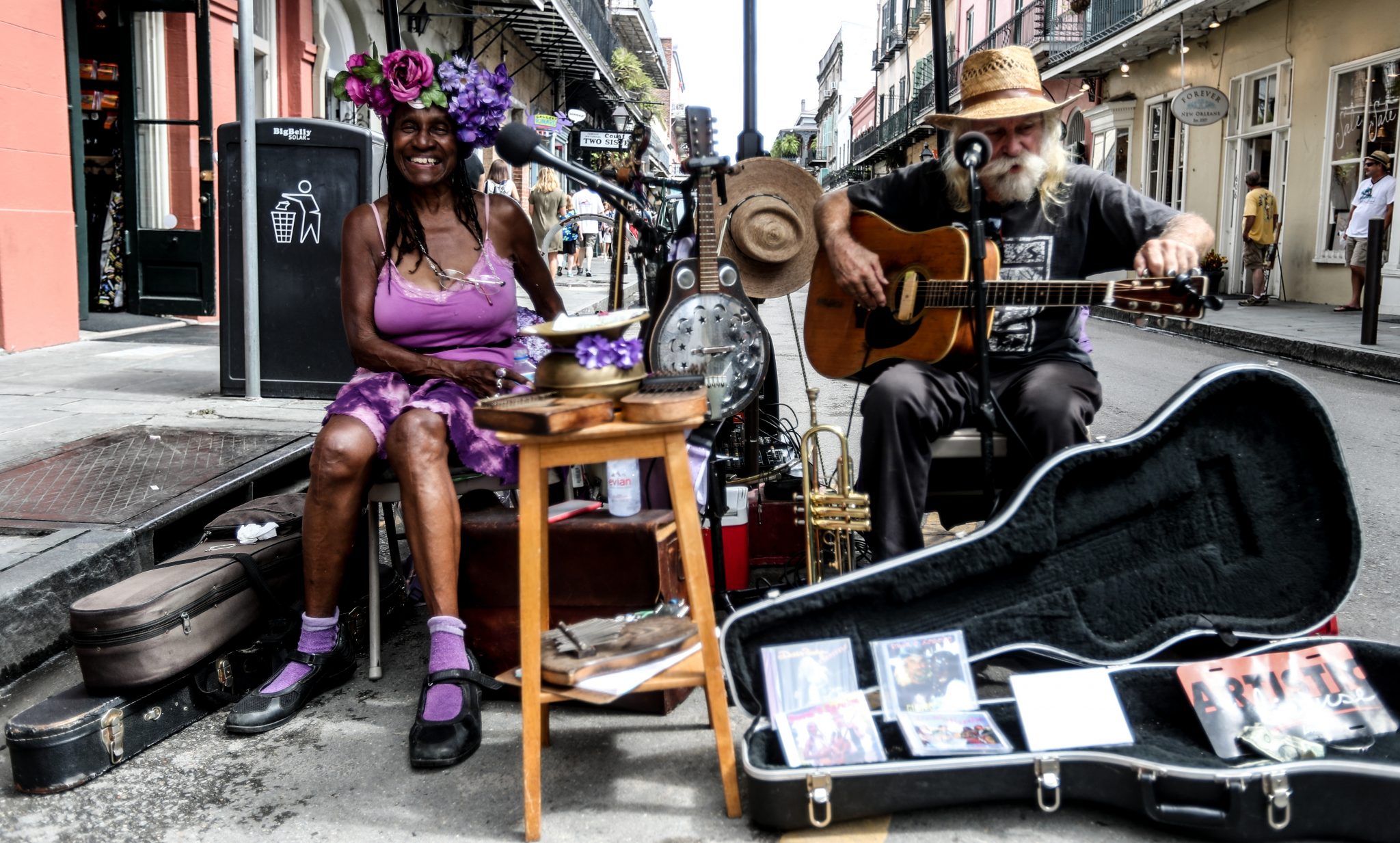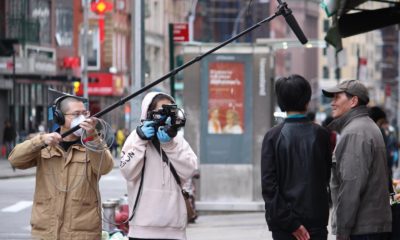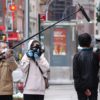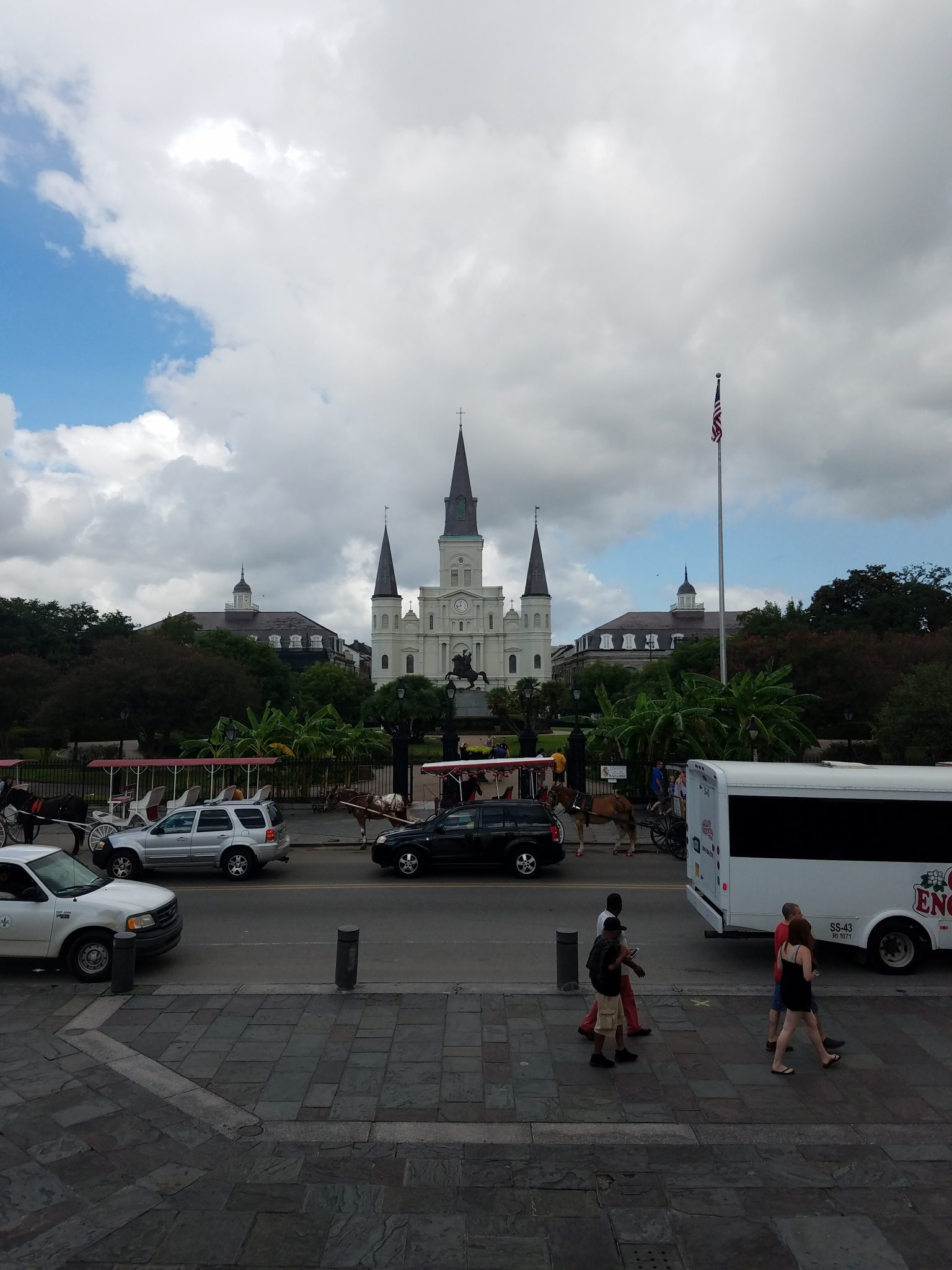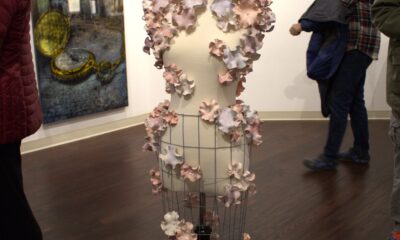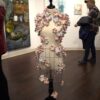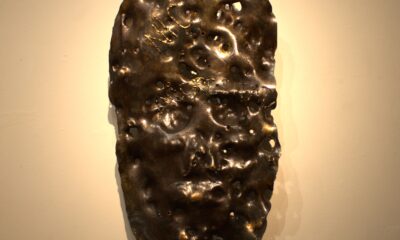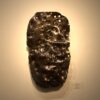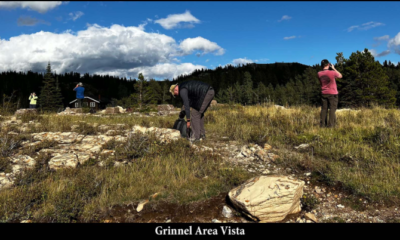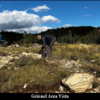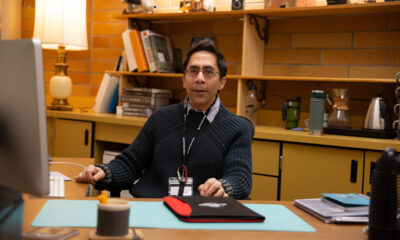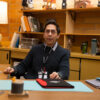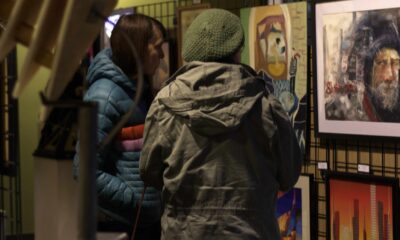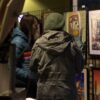Art
NIC Journalism students in New Orleans
NOLA: Day 1
I’ve always wanted to go to New Orleans, and the Excellence in Journalism conference put on by the Society of Professional Journalists gave me two excellent reasons to go.
My New Orleans experience began when we stepped out of the airport and into what felt like a cloud of steam, better known as Southern humidity. The temps were much warmer than what I’d be walking through at NIC, and the thick air surrounded us in a welcoming, but sweat-inducing embrace.
Geoff Carr, our club advisor and chaperone, Tim Gant, our multi-media editor who was nominated to go on the trip for free, as well as myself, rushed to our shuttle and waited in anticipation along the ride as we were taken to the elegant Sheraton New Orleans where our conference was to be held. We were to meet up with Katie Hartwig, the photo editor later on, as she had taken a different flight.
We finally pulled up to the hotel. I squeezed myself and my luggage through the rotating doors and stepped into the refreshing air-conditioning and tried to take it all in. My senses were overloaded with all the sights and sounds.
The front of the hotel, which faced Canal Street, was a huge wall of glass so that you could see everything going on inside and out. A large fountain lay in the front and center of the dining area just beyond the monstrous window. But what caught my attention the most was the piano right in front of me in the lobby, which sat in the middle of a tiny roped-off area, playing a jazzy tune all by itself, the keys independently moving in a peppy manner. I pondered a second as to how on earth it did that, but I was soon distracted by the necessity of checking in to my room.
Since there were no meetings that first day, we decided to explore the area a bit and find a place to eat. We took a detour down Bourbon Street while on the hunt for a restaurant. Bourbon Street was alive and well when we passed through. If the Big Apple is the “city that never sleeps,” then the Big Easy is sure to come up a close second. However, while the many excited participants were awake, I’m not so sure as to how fully they were functioning due to the reputation alcohol has. They certainly seemed happy, none-the-less, if not a little unaware of their surroundings. It was amusing.
Not everyone was out strictly for the party, however. Street musicians and mounted police were out as well, making their living. The talent of the musicians was incredible, and their enjoyable. They lined the streets, stationed only far enough from each other to not let their music mix, except for the sounds and music from the inevitable parades which passed by.
Looking on the whole scene were the police and their horses. I marveled at the size and majesty of the beasts they sat astride. Both seemed unfazed by the commotion and chaos. The size of the steeds would have been enough to intimidate almost any unruly participant. I imagine what it would be like to try to explain myself to an officer at least three or four feet above me.
We finally settle on a place to eat at a restaurant called Daisy Dukes, and then set out on foot back to our hotel, the New Orleans night life not dwindling a bit, but just getting started. I am exhausted from the long, cross-country flight, and soon fall into bed and go to sleep to the sound of sirens and parades drifting up to my ears through my window on the 11th floor. It was going to be a short night, but I had to be ready for morning!
NOLA: Day 2
I groggily stand in the elevator just around 8:00 a.m. Help. I need caffeine. I made my way to one of the lower level floors to register for the conference and walk through the journalistic exhibits.
I grabbed my name tag and the complimentary “Excellence in Journalism” bag, which served as my first (and only free) souvenir. I walked through what I found to be the most interesting booths. A professor from Louisiana State University was delighted to speak to me about my slightly fuzzy future goals in life and the opportunities LSU had available for journalists. Then the creator of the “world’s first crystal ball,” an app named “Banjo, gave a demonstration on how his program Banjo worked to allow journalists to find out what is going on before it hits the news by picking up incidences pin-pointed from social media. I signed up for that one.
Time slipped by, and then it was time for the first meeting. I checked the program on the app designed for the conference. Then I chose a topic that was about something I was curious about: Covering Domestic Violence in Native Cultures. The speakers on the panel included Mallory Black, reporter for Native People’s Magazine, Suzette Brewer, writer for Indian Country Today Media Network and Princella RedCorn, communications officer of National Indigenous Women’s Resource Center.I did not expect to learn as much as I did in that meeting. I was angry and inspired to maybe one day help make a change in the injustice of what happens to native women and children by non-natives on native lands. The statistics were disturbing. According to RedCorn, two-thirds of the violence against native women is commit by non-natives who cannot be charged because of jurisdiction discrepancies on reservations.
I was glad I went, and met with Black and Brewer afterward. They were incredibly kind, and offered to keep in touch with me when I expressed a desire to someday join ranks with them in their mission to be a “voice for the voiceless.”
Next up: a meeting with the people who established the Medill Justice Project and a couple other investigative journalism justice organizations. The speakers explained how they started their projects by sending prisoners facing life sentences applications to explain why they are innocent. Journalists searched for red flags that hinted to the possibility of a wrongfully convicted prisoner. Some strong examples are discrepancies in witness statements or extended periods of vigorous interrogation which could induce a confession due to pure exhaustion.
Those who participate, including students, gather information and compile the evidence they believe would exonerate their client. Then an article is constructed and sent to influential individuals or judges, for example.They then shared some of their cases that ended very well with the prisoners being released and reunited with their families. It was inspiring and showed me just how powerful journalism can be. The next meeting I attended only reinforced this conviction.
I checked my app to see what was next. “Spotlight” on Investigative Journalism interview with Marty Baron was what I settled on next. He was the keynote speaker of the day, and I have always been intrigued by the possibility of investigative journalism. But what I didn’t know, was that the film”Spotlight” came out in 2015 and Marty Baron was the man behind the story!
The movie “Spotlight” tells how the Boston Globe exposed the Catholic church’s cover-up and concealment of a priest who had molested children in each of the parishes he was consequently moved to. This abominable story was fought by the investigative journalists with the lawyers and representatives of the Catholic church. The truth finally became known to the masses, however, because of the persistence of the journalists who believed that this was a story that should be told, no matter the consequences. I have yet to see the movie, but it is definitely a must see for me!
Baron edited the Boston Globe when he assigned the investigative section of the paper, called Spotlight, to pursue the story of the Catholic priest who kept molesting children. Baron said the movie was faithful to the investigation. However, he reminded the audience it was a movie, and not a documentary. They worked hard to capture the theme, and, he said, they accomplished that.
Baron then spoke about what it took to be a good investigative journalist. Some of the things mentioned that were necessary were a good “BS meter,” an incredibly inquisitive mind, persistence and a nose for the deeper story that may exist. However, he stressed that all reporters should carry an investigative mentality.
“Any reporter should be in tune to which stories should be covered more closely,” he said.
Let’s just say, after the meetings that day, I was one proud, inspired and excited journalist major!
Afterward,I went back to my room and changed into my swimsuit and cooled off in the rooftop pool on the eighth floor. The water was refreshing after walking around in the humidity of the late afternoon. Soon the sun began to set, though, and I decided to go dry off and change to go to the opening night party the conference was holding at “Mama’s House of Blues.”
Once again, the music was amazing. It just kept getting better and better! A jazz band played on the concert platform, sweating as they vigorously played for one impressed audience. The players tapped their feet and jived to the beat while the audience swayed to the rhythm. I stood and tried to take it all in while I ate my bread pudding and videoed it on my phone to try to capture the talent and show it when I got home.
When the band broke up for a break after a long stretch of songs, I left the House of Blues with my head ringing from the music I’d heard from the day.
NOLA: Day 3
I woke up late. Jet lag. Ugh. I dragged myself to a meeting called “Making a Murderer– and reporting on it.” It was based on the Netflix series about the wrongful murder conviction of Steven Avery. The speakers on the panel were the reporters who covered the case. Some were even in the original footage in the series.I had not seen the documentary, but my interest was piqued. The reporters spoke about their contact with the Avery family, what it was like covering the event, and the confusion involved with the details of the case.
I started to doze off during the Q & A portion, however, and decided it was time for me to retire to my room for a bit. Unfortunately, I slept through the rest of the meetings which ended early that day, since it was the last day of the conference.
When I woke up, I ended up going to dinner and finding a restaurant which offered a vegetarian option of trying some Cajun flavored food. Because I don’t eat meat, I missed out on a large portion of the unique cuisine in New Orleans. But I wasn’t worried, I have never been much of a food connoisseur, and was able to enjoy all the other aspects of the culture.
I had yet another opportunity to experience the fabulous music when we were on our way to the restaurant and we happened upon a parade. A marching band played with enthusiasm and precision. They didn’t miss a beat. Crowds cheered and those in the balconies threw colorful plastic beaded party necklaces down on the participants in the parade while passerby threw the necklaces back up, resulting in the accessories flying all over the place and landing on signs, decoratively hanging there. Parades are such a commonality there, that you could purchase your own personal parade for $300. That includes the police escort.
When I got back to the hotel, I fell into bed. Jet lag. Ugh. Goodnight New Orleans.
NOLA: Day 4
Our last day in the Big Easy. How sad, but what fun we’d had and how much we’d learned! We packed up, checked out of our hotel rooms, and decided to finish up our souvenir shopping before we had to head to the airport. Our main source for souvenir searching took place at the French Market, an open-air market which contained numerous hand-made objects like soaps, paintings, and jewelry. It was difficult to make a decision, but I finally finished my shopping. My favorite item I bought was a small petrified alligator head— only in New Orleans.
The vendors were warm, friendly and conversational. I struck up a conversation with the soap lady who was excited to hear that we were writers, since she wrote as well. We talked about the unique personality of the city and how much I had enjoyed myself there during my visit.
I also got to try beignets, a warm French doughnut smothered in powdered sugar. We bought them to go at the famous Cafe du Monde. I was unfortunate enough to be walking behind Geoff as he bit into his beignet. That resulted in a cloud of powdered sugar that I ended up walking into. I was in the wrong place in the wrong time, and tried not to inhale as I walked through.
Our time was soon up. We left for the airport and left New Orleans. But we didn’t leave our memories and lessons. We came back home with our ears full of the music, eyes full of sights, and minds inspired by the incredible people who spoke and the Excellence in Journalism conference.
Hey! I'm Michelle, the Managing Editor for NIC's Sentinel. I love to read mysteries, write, ride horses (only the sane ones), and dance ballet. I was born in Music City, USA and have lived all across the U.S. Now I'm here, writing for the Sentinel. It's pretty cool, you should check it out!


